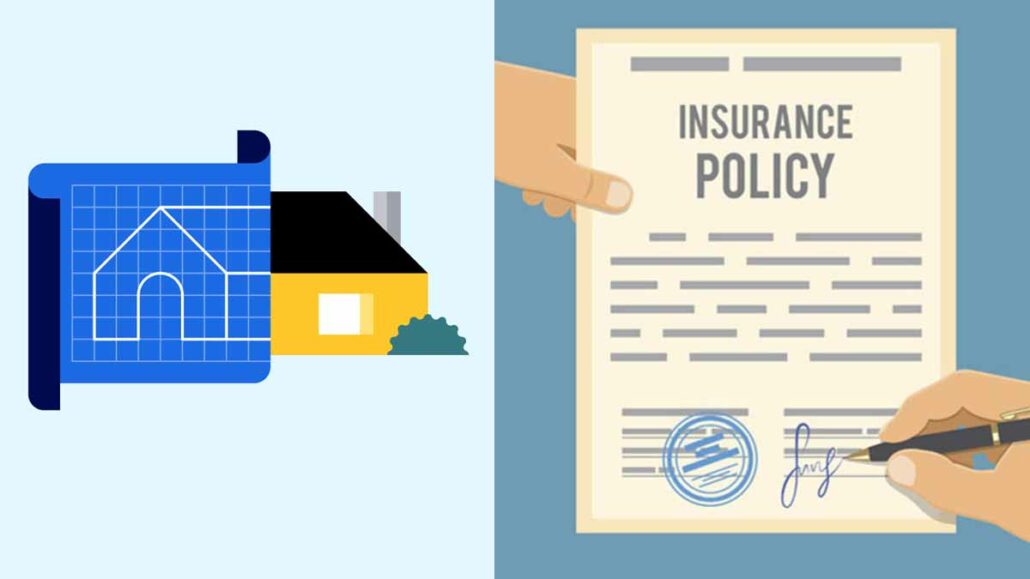Owning a home is a significant investment, and safeguarding it with the right insurance is crucial. That’s where Home Insurance Guides come in, your one-stop resource for navigating the often complex world of homeowners insurance. Whether you’re a first-time buyer or a seasoned homeowner, these guides offer valuable insights and clear explanations to empower you in making informed decisions.

Dive into comprehensive guides that explore different policy types, from basic coverage to specialized options for unique needs. Understand key terms like dwelling coverage, personal liability, and replacement cost. Learn how factors like location, property features, and claims history influence your rates. Discover valuable tips for comparing quotes, negotiating with insurers, and filing claims smoothly.
Types of home insurance
There are several different types of home insurance available, each with its coverage and benefits. The best type of home insurance for you will depend on your individual needs and circumstances. Here is a summary of the most common types of home insurance:
HO-1 (Basic Form)
This is the most basic type of homeowners insurance and only covers your home and belongings against named perils, such as fire, theft, and vandalism. It is the least expensive type of homeowners insurance, but it also provides the least amount of coverage.
HO-2 (Broad Form)
This type of insurance covers your home and belongings against more perils than an HO-1 policy, but it still does not cover everything. It is a good option for homeowners who want more coverage than an HO-1 policy but don’t need the most comprehensive coverage available.
HO-3 (Special Form)
This is the most common type of homeowners insurance and covers your home and belongings against all perils except those that are specifically excluded, such as floods and earthquakes. It also includes liability coverage, which protects you if someone is injured on your property or if you damage someone else’s property.
HO-4 (Renters Insurance)
This type of insurance is for renters and covers their personal belongings against damage or theft. It also includes liability coverage.
HO-5 (Comprehensive Form)
This is the most comprehensive type of homeowners insurance and covers your home and belongings against all perils, with no exclusions. It is the most expensive type of homeowners insurance, but it also provides the most coverage.
HO-6 (Condo Insurance)
This type of insurance is for condo owners and covers their units and personal belongings. It also includes liability coverage.
HO-7 (Manufactured Home Insurance)
This type of insurance is for manufactured homeowners and covers their home and belongings. It is similar to an HO-3 policy, but it is designed specifically for manufactured homes.
HO-8 (Flood Insurance)
This type of insurance is separate from homeowners insurance and covers your home and belongings against damage from flooding. It is required if you live in a high-risk flood zone.
In addition to the types of home insurance listed above, there are also several endorsements that you can add to your policy to provide additional coverage. Some common endorsements include coverage for additional living expenses, identity theft, and water backup.
How Much Does Home Insurance Cost
The national average cost of home insurance in the USA varies depending on the source and the specific details of the policy, but it generally falls between $1,678 and $1,820 per year, or roughly $140-$152 per month. This is for a policy with $250,000-$350,000 of dwelling coverage, which is the most common amount. However, keep in mind that this is just an average, and your actual cost could be much higher or lower depending on several factors.
Factors Affecting Home Insurance Cost
Here are some of the key factors that affect the cost of home insurance:
Location
Rates vary significantly by state, with some areas prone to natural disasters (like hurricanes, tornadoes, or wildfires) having higher costs. For example, states like Nebraska, Oklahoma, and Kansas tend to have the most expensive rates, while Hawaii, Vermont, and Delaware are typically cheaper.
Home details
The size, age, value, and construction materials of your home all play a role. Newer, larger homes built with expensive materials will generally cost more to insure.
Coverage amount
The amount of dwelling and liability coverage you choose will impact your premium. Higher coverage amounts mean higher costs.
Deductible
A higher deductible lowers your premium, but it also means you’ll pay more out of pocket if you need to file a claim.
Your credit score
Some insurers offer discounts for a good credit history.
Claims history
Having filed past claims can increase your rates.
Other factors
Your age, occupation, and presence of security features like alarms or wind mitigation devices can also influence the cost.
Compare home insurance quotes
Independent comparison websites:
- NerdWallet
- Policygenius
- The Zebra
Directly contacting multiple insurance companies:
- Get quotes from at least 3-5 different companies for a wider range of options.
- Consider both national and regional insurers.
What does home insurance cover?
Home insurance in the USA typically covers a range of things, but it’s important to remember that specific coverages can vary depending on the type of policy you have and the insurer. Here’s a general breakdown:
Main Coverages:
- Dwelling coverage: Protects the structure of your home and attached structures like garages or sheds from damage caused by covered perils like fire, lightning, windstorms, hail, theft, vandalism, and more.
- Personal property coverage: Covers your belongings inside the home if they’re damaged or stolen by covered events. This includes furniture, appliances, electronics, clothing, and other personal possessions.
- Liability coverage: Protects you financially if someone is injured on your property or you accidentally damage someone else’s property.
Additional Coverages:
- Medical payments: Covers medical expenses for someone injured on your property, even if they’re not legally entitled to them.
- Loss of use: Covers additional living expenses if your home becomes uninhabitable due to a covered event.
- Other endorsements: Depending on your needs and location, you may be able to add endorsements for specific perils like flood, earthquake, or sewer backup.
Things it Usually Doesn’t Cover:
- Normal wear and tear: Home insurance is not meant to cover routine maintenance or gradual deterioration of your home or belongings.
- Flooding: Standard policies typically exclude flood damage. You’ll need separate flood insurance if you live in a flood-prone area.
- Earthquakes: Most homeowner’s policies don’t cover earthquake damage. You may need separate earthquake insurance depending on your location.
- Intentional acts: Damage caused by you, a family member, or someone acting on your behalf is usually excluded.
How to make a home insurance claim
Filing a home insurance claim can feel overwhelming, but here’s a step-by-step guide to help you navigate the process:
Immediately After a Covered Event:
- Contact your insurance company: This is crucial, as most policies require prompt notification of a claim. Reach out via phone, online portal, or their mobile app.
- Document the damage: Take detailed photos and videos of the damage inside and outside your home. Include close-ups and wide shots to capture the extent of the damage.
- Protect your property: Take reasonable steps to prevent further damage. For example, cover a broken window with a tarp or turn off the water if there’s a pipe leak.
- Gather important documents: Have your policy number, contact information, and any documentation related to the event (police report, fire report, etc.) readily available.
Filing the Claim:
- Complete the claim form: Your insurance company will provide you with a claim form to fill out. Be honest and accurate in your descriptions of the damage and the cause of the event.
- Provide supporting documentation: Submit photos, videos, receipts for temporary repairs, and any other documents requested by your adjuster.
- Meet with your adjuster: An adjuster will be assigned to your claim to inspect the damage and assess the value. Be prepared to answer questions and provide them access to your property.
During the Claims Process:
- Stay in communication: Maintain communication with your adjuster and respond promptly to their questions.
- Negotiate the settlement: The insurance company will offer a settlement amount based on their assessment. You can negotiate the amount if you believe it’s insufficient.
- Get estimates for repairs: It’s wise to get multiple estimates from qualified contractors to compare costs before accepting the settlement.
- Choose a contractor: Select a reputable contractor to complete the repairs based on your chosen estimate.
- Keep records: Maintain all paperwork related to the claim, including estimates, receipts, and communication with your insurer.

